My sharing photography skills - one-third rule & golden ration (1)
Being a traveller, I am not very confident but I do believe that during my Erasmus time in Spain, I have taken many or enormous beautiful or fantastic photos. Perhaps for some people, they might think that.
“ Okay, normal photos for saving memories are enough for them, but I did meet many people who have professional cameras but they did not know anything even the basic rules or skills I would say to take a good photo.”
For example, during my time in Cordoba, I have met a French guy, he has been in many countries in just Europe but in Thailand and Japan as well . He had a good camera, a lens but he did not know about the most basics photography skill called one-third rule.
I do not know whether your guys might need it or not, but sometimes, I think you could just be in one place for one time in your life so learning a little bit about that, you would have more beautiful photos for your beautiful memories, too.
So that’s why I decided to write about the one-third rule in photography today, hoping that you guys will get it.
So let’s start!
Many people do not like the phrase "image layout rules". They think it's too cliché, like how simple rules can be summarized as a quick tip for the photographer, and then can create a good photo frame.
I would like to share this article right after the most basic lesson about composition in photography - the one-third rule.
Please tell me in advance if you find the one third rules helpful to you, you can be happy with it, and sincerely support any way you can get the photos you like. This post, another view, seeks to break away from the rules-based layout, freedom and more creativity. However, in spite of the rules or no rules, the composition of the frame always takes on the hook between the photographer and the viewer in what the photographer sees.
1. What is the rule of one-third?
For a simple introduction to the rule of thirds, let me say one example.
During my time in Italy, there is one city, one place that even though it was kind of the central of nowhere which is not suitable for me to approach by plan, I still had visit to see the great architecture that is linked to the one -third rule.
Can you guess what it is?
Okay, I will tell you,
I have spent a lot of money and effect to visit a city where i could say the center of art that one-third rule was born again.
Florence
In here, I mentioned the city of Florence, the city of the Renaissance. One-third rule was used at its early age at the Santa Maria del Fiore, the grand cathedral of Florence. As a photographer, I knew about that so I wanted to go there and I have done it.
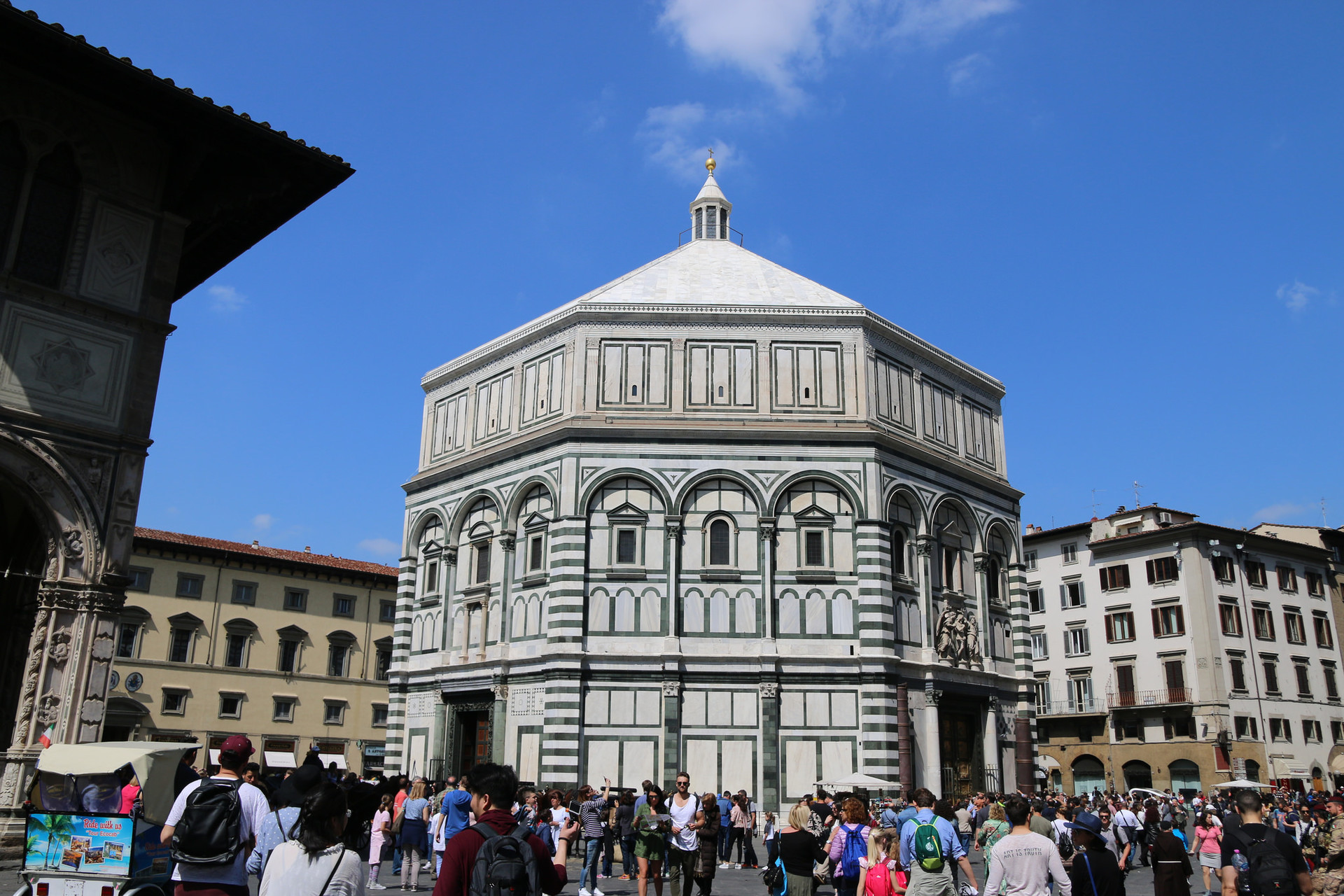
To be honest, I think It's simply a grid of straight lines dividing the frame into nine equal parts. The one-third rule has been adopted by many people, including some professional photographers, to make a guiding rule for arranging a successful layout - it suggests that the photographer put the selected objects on a in four straight lines (blue), or, ideally, at one of the four intersections (yellow) as shown below:

2. Captured objects cannot be positioned by one-third rule
If you look at it, it's not hard to see the presence of a third of the rules in many photos - especially those with relatively small, unique and separate objects. Clearer than other things appear in the picture. For example, you take a single bird on the roof, flying, a man on the open sea, or a car on the road ... it's so easy to say Oh! A bird, a human, or a car, a lump ... is located at the intersection / strength point in a one-third rule.
For objects that are too large: For objects that are too large, I find it impossible to fit the intersection, even when it is squared in one-third of the proper size. Often found popular with the landscape, architecture ... that the photographer is interested only in large objects, boundaries of objects cannot be clearly defined, but certainly it is still effective with many type.

For example:
Look at the picture below, this is my picture taken at the church of Sapa, Vietnam, the object of the church has occupied the area of the frame, how would you put it at the intersection?
As you can see, the length of the sanctuary actually intersects with the second crossing. But it extends significantly both sides of the tower and above and below the 2nd cut - The second intersection also intersects at many points as any crossroads from the church bosom to 2/3 of the frame. The object occupying a corner of the entire 1/3 of the grid of cells is technically correct, but it would be wrong to think that this image is an example of a one-third rule. It is impossible to say a whole body of a whole object (the church) is the main or secondary.
On the other hand, I find that for object-oriented perspectives, there are many subjects: What happens when you take an abstract scene or have multiple subjects? Is it possible to arrange its composition as a photograph using the one-third rule?
I do not think - if your subject is not relatively small and well defined, then first of all, it is almost impossible to say whether it conforms to the one third rule.

This is a photo I took of myself in the city of Toulouse in southern France. Try applying a one-third rule to this photo.
You could justify that the picture was in line with the one-third rule - at least something that intersects 1/3 and 2/3 lines. If so, all elements of this image will intersect with any (or even innumerable) lines that are interlaced along the frame, but the main object (me) is completely inappropriate. with one-third rule. This is also not a rare sight - almost every time you take a wide angle shot, the one-third rule can automatically be taken to match the scene.

My photo taken in Mont Saint Michea, France
3. The straight line network is not clear
It is not difficult to squeeze a snapshot in accordance with the one third rule, provided that the subject is not too large, unambiguous, clearly separated from the general perspective. Almost everything, you just need to practice, is able to force your subject to comply with the rules.
So, what if the object is easy to identify, but beyond the intersection, the lines divide the third part somehow?

This is a photo I took in the village of Hallstatt, Austria. Try applying the one-third rule to the photo.
Yes, my eyes are slightly out of the 1/3 crossing point. And we'll say Oh, what the hell is wrong, right? This image is almost entirely compliant with the one-third rule.
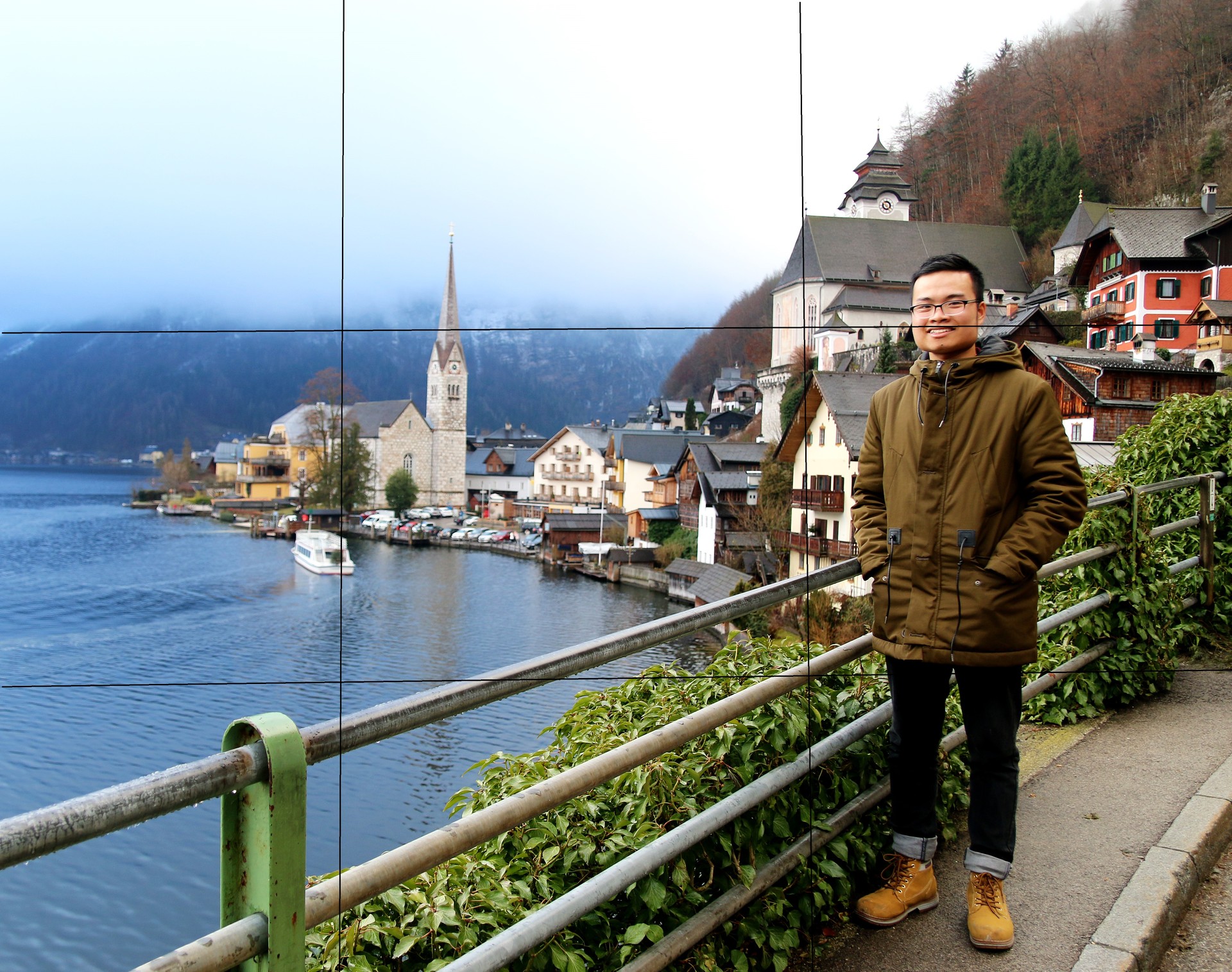
Thus, the "one third rule" becomes the "rule of what looks like a third". Thus, there is a gradual transition - as the subject of your book away from the third milestone in how much, then obviously the less your photos matching rules much. If so, we rely on the nature of flexibility that, rule of thirds is amended: instead of putting the subject at the intersection of the straight lines is recommended that the subject is his on color area (wider area delivery point):

But that's not entirely true, because under the one-third rule, most people would not recommend putting the main object close to the edge of the photo, edge-to-edge. That is, the main subject must be closer to the center, so we have to modify the straight line network to look like this:

Now we have the rule of bulge points. If you place the object relative to the blue area, you will easily convince other photographers to believe that your photo complies with a one-third rule. Some judges or countless viewers will mark that as a successful photo frame!

4. There are exceptions

My photo taken in Venice, Italy - All rights reserved
Each lesson in the one-third rule that I often hear from teachers, ends in the following: "There are exceptions to the rule.
Sometimes, you want to sort your photos out of one-third rule. That's all right! As a photographer, you have the power to decide on the look of your photograph. Do not be afraid to break the rules when, in another way, the picture you take is still better. "
So, to see the one-third rule is not clear about the perimeter each become more dim: "In general, put the object inside the blue box above. But if the picture looks better than the other ways, do not be afraid to give up the rule. " Perhaps the highlight of the one-third rule is to recommend placing the object wherever you want on the frame as long as you feel the desired expression. If so, I agree completely.
The one thing that Henri Cartier-Bresson used to be - film time - not wanting to see now has happened. That's the day that all cameras have suggested displaying a one-third-frame frame / golden ratio in the viewfinder of a recording device, or on a frosted glass or live-view screen.
5. Discard rules
Some photographers support the one-third rule by saying it is a useful learning tool for beginners - over time, highly skilled photographers no longer rely on it. to arrange the layout of their photos too.
My suggestion here is to study the rules one-third seriously, then to abandon it.

My photo taken in Thay Pagoda - Hanoi, Vietnam
Of all the arguments about the one-third rule, I agree with the above argument. At one point, the one-third rule becomes a way for beginners to easily see the power of a subject's composition far from the center of the frame. . Of course, most beginners are framing their photos with completely centered layouts - perhaps a one-third rule helps them recognize eccentric objects as well. can be very beautiful.
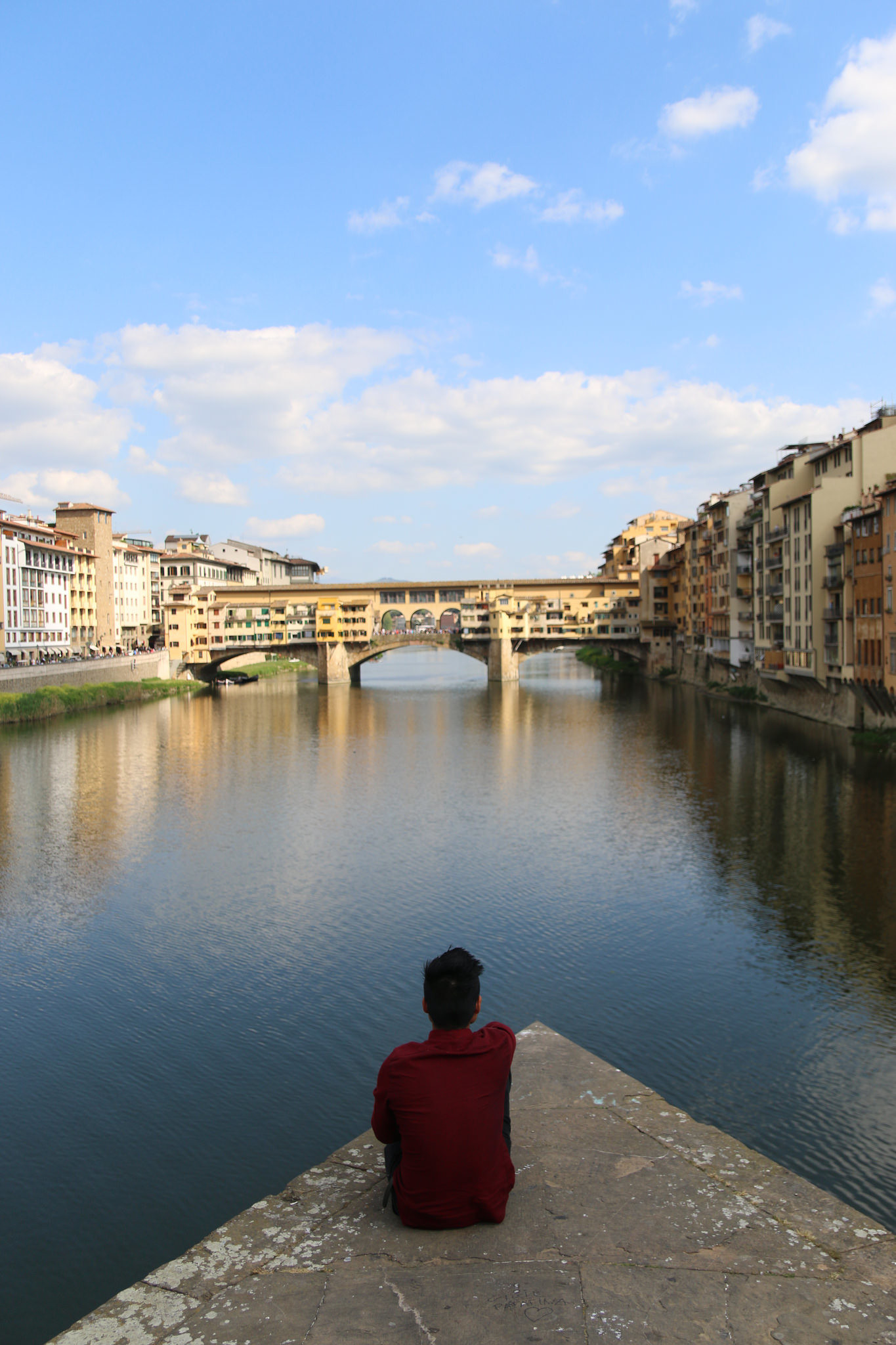
But if you want to tell photographers that beginners have eccentric objects that can look very beautiful, why not just say so? Assuming that the one-third rule is an intermediary between beginners and their knowledge of eccentric layouts, then there is no reason why the rule takes precedence over the image. both. If for beginners photography is thought creatively, which of the following methods is more effective: Let them take a one-third rule, or just take a picture of them. Is the object lying eccentric? Maybe both are equally effective, but the latter method is far from being as restrictive as the rule-based approach.
So a lot of people started to learn shooting, just watching through the rule of thirds, and overcoming it to create creative components in the creative image, expressing more strongly the intent and the amount of information. Believe that they want to convey through the photo frame.
6. Fibornacci gold ratio
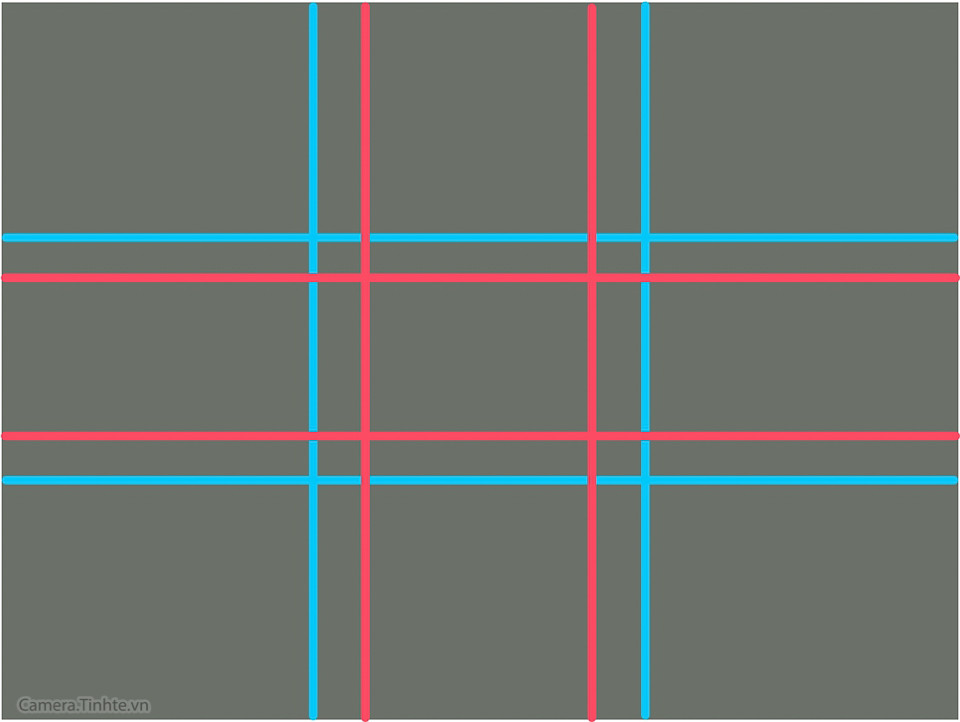
We know, the traditional one-third rule is not self-generated, it is said that it originates from the famous golden ratio - the golden ratio. The golden ratio of 1.618: 1, is an approximation to the following mathematical expression: ½ (1 + √ 5)
Numbers are valued because they are based on the Fibonacci sequence in which each number is the sum of the two numbers preceding it: 0, 1, 2, 3, 5, 8, 13, 21, 34, 55, 89 , and so on. If you divide a number in the Fibonacci sequence with the number preceding it, you are approaching the golden ratio. For example, 89/55 rounded to 1,618.
I often hear people say that the one-third rule is reduced to the golden ratio, which is why it's "effective." In this regard, I have 2 remarks:
1 / If the one-third rule is a golden ratio, then it is very bad. Take a look at the network of straight lines below (the rule of one third of the blue, the golden ratio of fibornacci red). If the one-third rule is wanted by many people to completely turn it into a golden ratio, why is it not taught so-and why are the lines in the camera used to arrange the daddy? The lobbies split the frame into three, instead of the golden ratio? Not to mention the grid of such cells that causes the crossings to swell and become more obscure.
2 / It does not mean anything at all. This point can cause debate and reaction of many. Is it rectangular / average value / golden ratio always appear in nature? And if the Greeks ever used that as the basis for the building of the Parthenon, it must have had some intrinsic value.
Consider two common gold ratios: appearing in the spiral lines of the galaxy and on the shells of the dugout. You see the picture below is borrowed from Logarithic Spiral:
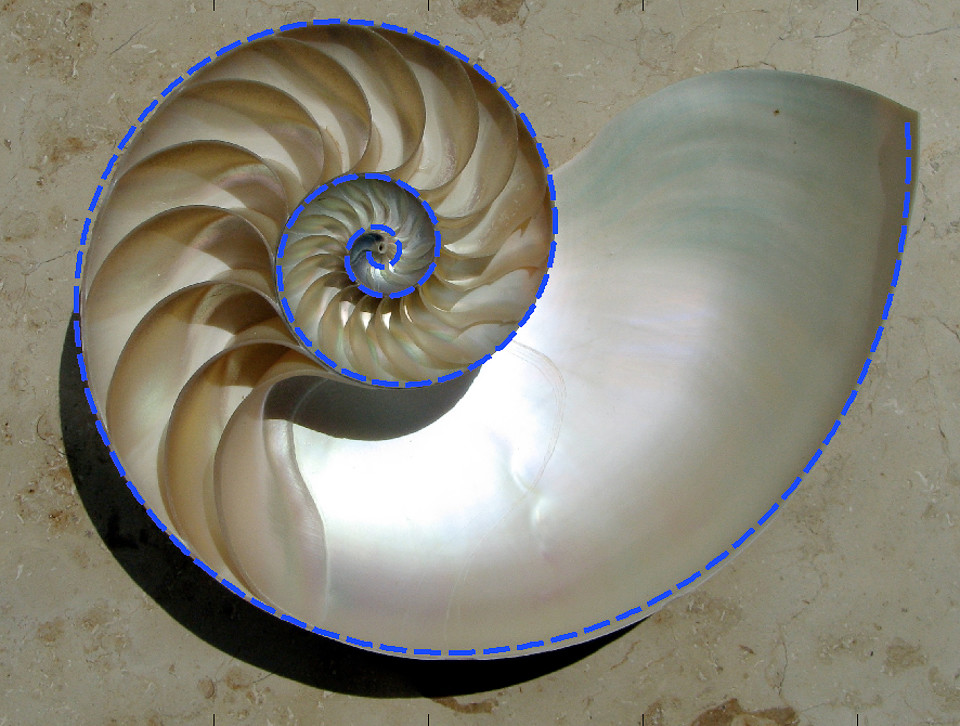
Photo Logarithmic Spiral
Although I agree that both samples are typically logarithmic, the golden ratio is only a very special case of the extended logarithm - rarely the characteristic angles of galaxies or shell shells. With the corners of the golden twist, in part because the spirals in the galaxy cluster and the shell itself are inherently different. If galaxies' spiral lines do not have the same angles, how can they become a pattern for gold twists? Details can be found on the Logical Figures Spiral
OK, the golden ratio is an interesting mathematical figure, but not so fixed as a reason to be framed to be the norm for human perception of natural beauty - especially when See it does not often appear in the natural world.
Many documents for the Parthenon to show the rate of gold stars. Put most of the rectangles on the Parthenon and declare it magically match the scale you want - there are enough "starting points" along the Parthenon to do so - but the shape The clearest in the Parthenon (as shown below) has an exact ratio of 9: 4, or 2.25. This is a far cry from the 1.618 gold ratio.
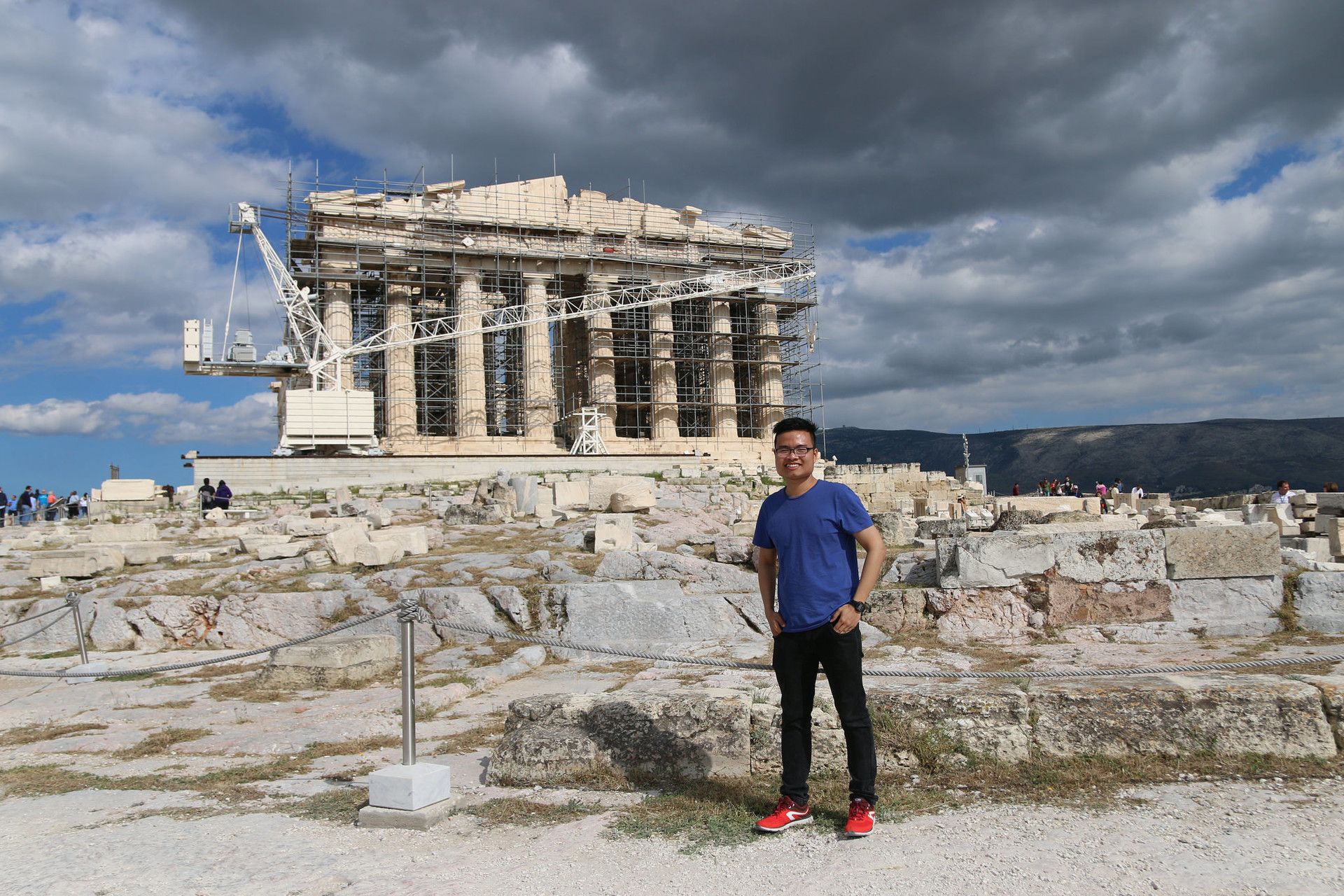
I would recommend this is a rectangle ( behind my back) that many people think fit the golden ratio. If the red rectangle in the above image is extended to the top of the facade, as well as the lowest level (then extending to the edge of the facade), the ratio of the facade is approximately 1.71 . Well, this number is close to 1.618, but the ancient Greeks were a clever group - as if they wanted the Parthenon to represent the golden ratio, they would have built a completely "rectangle" Exactly. Most of the charts you look at online use straight lines that are deep enough and spaced large enough to correct the other 5% difference, but the difference is even greater in the real world - temples. The Parthenon is nearly 70 meters wide.
These twists, in general, are beautiful, making it easy to believe that the golden twist is special - no doubt, it looks great. But in the four charts below, can you tell where the yellow helix is? If so, is it really more beautiful than other twists?

The irony is that the one-third rule is far more common in nature than the golden twist - and only one-second rule is more common, at least in the animal kingdom. Does this mean the ½ ratio is better than the scale, for example, 17/23?
* This section may not agree with many. If you also do not agree, invite you to watch the clip discussing the golden ratio thoroughly exhausted gold ratio, the debate over the Panthenon Temple:
https://youtu.be/4oyyXC5IzEE
7. Conclusion – keeping any rule as default would result in reduction of creativity
Yes, of course, the whole of this article is that I've been looking in the other direction a one-third rule. Well-versed photographers understand that the value of a picture has nothing to do with the fact that it matches a dogmatic one-third rule. Likewise, many agree that the best method for arranging the composition of a photo varies depending on the scene of the specific scene depending on the scene in front of the camera.
However, I find the danger lies in the fact that photographers keep the one-third rule set as default. This habit paves the way for sloppy, hard-dry layout arrangements - placing objects alongside the intersection even when they know a central layout might be the best, for example. And even if all the photographers knew the rule could be broken, they would not put it into practice when shooting.
Maybe a one-third rule helps a beginner begin to see the powerful effect of framing the eccentricity. I myself am better before shooting. Hear the words of the teachers. But the rule of thumb loses its value when it limits the photographer's creative approach. Rule one-third, force you or follow it, or deliberately break it - because it completely limits your creativity.
The mentality of beginner photographers, it's great to think that you can improve your compositions through a simple trick like that - the one-third rule, but that's never easy. Long-term effects. In order to overcome the basics of layout layout, you confine yourself to yourself as if you had no choice but to follow the easy rules. Why interfere with progress with rules that lessen such creativity?
So if anyone has succeeded in one-third rule, let me consider this last point: the one-third rule is the best way to just sort your photos like yours. . Look at countless pictures, art exhibits, in addition to color or other things, and the rest of it is a picture frame of someone I've seen hidden in the unconscious.
Even if the rule has special properties, the value of visual creativity in photography is a freedom that cannot be stolen by any rules.
Photo gallery
Share your Erasmus Experience in Hanoi National Economics University!
If you know Hanoi National Economics University as native, traveler or as exchange student... share your opinion on Hanoi National Economics University! Rate different characteristics and share your experience.
Add experience →






















Comments (2 comments)
good!
good!